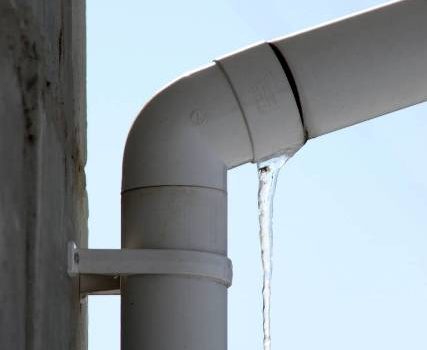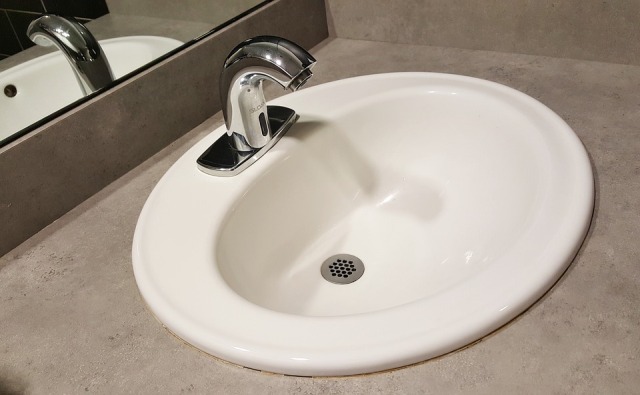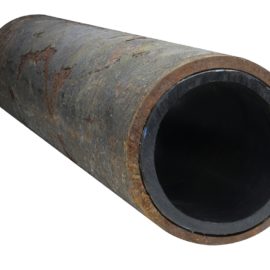
Plumbing: Importance of Laying Drains With the Correct Dimensions
Summary:
– Importance of laying drains
– Diameter and height of the flows
In many operations, including plumbing, construction, you can carry out renovation and decoration by yourself, but they must meet installation requirements. Otherwise, you’re doomed to failure.
The height of the drains of a plumbing installation is part of the standards to be followed to avoid future inconveniences. This post describes the height of drains in detail according to the equipment of the shower room, kitchen and laundry room.
Importance of installation of the drains

The drains must evacuate the wastewater to a central collector connected to the sewer or a non-collective sewerage system (septic tank, sump, etc.). A distinction is made between unloaded household water from kitchens, bathrooms and laundry rooms and loaded black water from toilets.
The rules for installing the drains meet standards that are prescribed by the experience of builders and users. There are two areas where the standard must be followed: the cross-section of the pipes and their installation height.
Pipe cross-section:
– The cross-section depends on the diameter of the pipe and the square of this diameter;
The section must be adapted to the quantity of water to be evacuated; a too-small section will slow down the evacuation and lead to clogging; a too-large section will be noisy and will cause unpleasant odours siphons.
Installation height:
– The installation height of the drains must be adapted to the height of the drain equipment and must be planned at the beginning of the work; you should follow the hydraulic requirements.
– To avoid too vertical drains that generate noise and siphon deformation, a drain must combine a vertical height (of the drain) followed by a pipe with a controlled slope (3 to 5 cm per metre is recommended, 1 cm per metre minimum).
Good to know: all drains should be connected via a siphon to avoid foul odours. It is preferable to choose removable siphons when the sanitary system is not equipped with one. The height of a drain must correspond to the height of the siphon outlet.
Diameter and height of the drains
This list includes the requirements to follow when installing a drain, depending on the appliance or sanitary fitting installed. Attention, the heights are determined based on “finished floor” (with tiles, parquet, etc.) and not “rough floor” (on slab or floor before covering).
Laying a drain in the shower room

The classic shower room is considered here without toilets which are treated separately:
– Washbasin: the height of a washbasin is generally between 83 cm and 85 cm from the floor. The (external) diameter of the drain pipe recommended for a washbasin is 32 mm:
◦ Pedestal washbasin: the height of the drain is to be determined according to the model and the height of the supplied pedestal.
◦ Wall-mounted washbasin: the height of the drain must be 52 cm from the floor.
– Bidet: a bidet has a capacity not far from a washbasin. The recommended diameter of the drain is 32 mm, and its installation height varies between 5 cm and 11 cm depending on the model.
– Shower: the standard diameter of the drain pipe for a shower is 40 mm. The height of the drain depends on the type of shower tray:
◦ Italian shower: evacuation under the floor through the lower floor or crawl space.
◦ Shower with tray: at least 4 cm and then determined according to the tray.
– Bathtub: drainage diameter identical to the shower 40 mm, the height of the drain is between 9 cm and 13 cm depending on the model of the bathtub and its siphon.
In the kitchen and laundry room
The standard height of kitchen furniture tends to increase to keep up with the constant growth of the population. However, the height of the siphons of wall-mounted, cabinet-mounted or fitted kitchen sinks is fairly standardized
– Sink: the recommended diameter of the drainpipe is 40 mm. The height of the drain is 52 cm from the floor.
– Washbasin: identical to the sink: 40 mm diameter drain pipe, height 52 cm.
– Washing machine, dishwasher: pipe diameter 32 mm, height 52 cm. Installing the siphon is not necessary because it is integrated with the appliance.
Discharge height for WC
The diameter of the flue pipe of a WC varies from a minimum of 80 mm to a maximum of 100 mm. The type of drain and the height of the drain will depend on the toilet bowl model:
– Horizontal drain pan: the standard height above the finished floor is 18 cm measured at the axis of the tube (centre of the section). The distance between the finished wall and the connection to the bowl varies from 18 cm to 22 cm, depending on the model of the bowl.
– Toilet with vertical drain: the distance between the finished wall and the drain axis is 22 cm; no height is recommended as the drain must be flush with the finished floor.
Good to know: it is possible to install a WC on a drain with a diameter of less than 80 mm provided that you choose a macerating WC.
To find out more about plumbing services, you can check the Schmidt Plumbing website. Their team of professionals guarantees superior results whether you are looking for a plumber & gasfitter, leaking & burst pipe repairs, bathroom renovations, hot water system services or other plumber services.




Pingback:5 Essential Steps for Installing a Classic Shower - Pipesandwrenches
Pingback:What’s the Purpose of a Rain Garden? | Garden lovers
Pingback:How to Use a Universal Multimeter or Tester - Pipesandwrenches